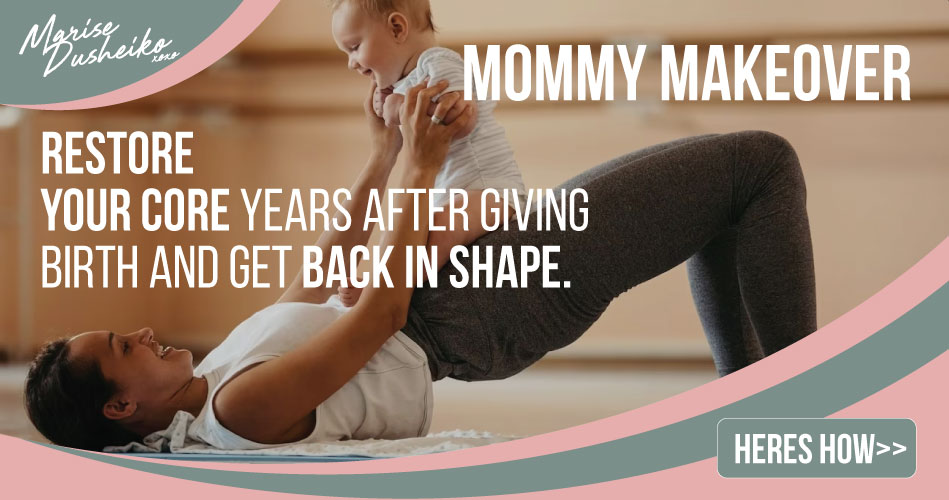Is Pregnancy a trauma to the body?
Pregnancy is a miraculous and life-changing journey for women, but it’s important to acknowledge that this transformative process can take a toll on the body. While the experience of bringing a new life into the world is undoubtedly rewarding, it is essential to recognize the physical challenges that pregnancy presents.
Understanding your Recovery
The first step is to realize that regardless of how you gave birth, there has been trauma to your body as a result of the pregnancy itself. Let’s break it down…
The Pelvic Floor
The pelvic floor, a hammock-like group of muscles that supports the bladder, uterus, and rectum, undergoes significant strain during pregnancy. As the baby grows, the increased weight places pressure on the pelvic floor muscles, leading to weakened support. A hormone known as relaxin is produced during pregnancy and helps all your muscles and ligaments relax so your uterus can expand into your abdominal cavity. While this is necessary it does also pose a problem. The lax muscles are now less able to support the weight of the pelvic organs or stabilize the pelvis as well as they normally would. It’s this laxity and instability that creates dysfunction in the pelvic floor. This can cause discomfort, urinary incontinence, organ prolapse and pelvic pain during pregnancy and beyond.
The Abdominal Wall
The abdominal wall, composed of various muscles and connective tissues, stretches as the baby develops. As a result, the rectus abdominis muscles may separate, a condition known as diastasis recti. This separation weakens the abdominal wall and can contribute to back pain, reduced core stability, and altered posture. The change in your abs post-birth is often referred to as the “mummy tummy” – that annoying pooch that seems to stick around despite dieting and exercising. The only way to really fix it is with corrective exercises that target the underlying cause or with surgery.
The Spine
Pregnancy alters the body’s center of gravity, causing the spine to curve to accommodate the growing belly. This change in alignment can lead to lower back pain and discomfort. Hormonal fluctuations, such as an increase in the hormone relaxin, also affect joint flexibility, potentially leading to spinal misalignment and pain.
Ligaments and Joints
Throughout pregnancy, the body produces hormones like relaxin, which softens ligaments and joints to prepare for childbirth. However, this hormonal shift can also lead to increased joint laxity, potentially resulting in joint pain, instability, and a higher risk of injuries. This is why certain activities like running and heavy weight-lifting are not advised for pregnant women.
Cardiovascular System
During pregnancy, the body’s blood volume increases to support the developing fetus. This puts additional strain on the heart and blood vessels, leading to an increased risk of developing varicose veins and potentially contributing to cardiovascular issues later in life. In addition, the growing uterus pushes up against the diaphragm making breathing more difficult especially when lying on your back.
Differentiating Pregnancy form Childbirth
While pregnancy contributes to the aforementioned bodily changes, it is essential to distinguish between the trauma caused by pregnancy itself and that caused by childbirth. Pregnancy entails a gradual, transformative process, whereas childbirth involves intense physical exertion during labor and delivery.
Childbirth can lead to additional physical impacts, such as:
Perineal Trauma
Vaginal childbirth can cause perineal tears or episiotomies, resulting in potential pain, discomfort, and the need for postpartum healing and care.
Cesarean-section
For women undergoing cesarean section (C-section) deliveries, there may be abdominal incisions, which can result in scarring and longer recovery times compared to vaginal births.
What Can You Do to protect your body?
Pregnancy is a remarkable journey that shapes a woman’s life forever, but it also brings significant changes and challenges to the body. Understanding the trauma pregnancy causes to the pelvic floor, abdominal wall, spine, and other areas is crucial for you to be prepared and proactive in managing your health during and after pregnancy.
Here are some things you can do..
Engage in appropriate exercises
It’s important to continue to move your body while pregnant. This will ensure adequate blood flow to the extremities but will also help you maintain the muscular strength needed to deliver a baby and care for it while your own body is still recovering. Pre-natal yoga and Pilates as well as swimming, walking and gentle weight lifting exercises are perfect.
Seek professional guidance
If you are unsure as to what exercises are appropriate for you, it’s always a good idea to seek the help of an expert. Even 1-2 sessions to get you started and explain things to you will be beneficial.
Practice self-care
Practicing self-care can help alleviate the impact of pregnancy on the body, promoting a healthier, more comfortable postpartum experience. Ask for help when you need it and take time to rest and prepare your mind and body – not just for the birth but for the days, weeks and months beyond. Having a baby is a massively life-changing experience, so giving yourself permission to acknowledge the weight of this change is essential.

For additional support and/or guidance on how to begin your postpartum wellness journey, reach out via email or social media anytime or checkout my 12-week signature postpartum wellness program, Mommy Makeover.




